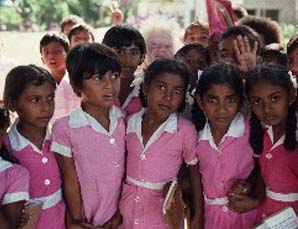
Frederica Elbourne
SUVA: The impact of media exposure on adolescent indigenous Fijian girls in Fiji has contributed to eating disorders, a study funded by Harvard Medical School has found.
Published in the British Journal of Psychiatry, the US research findings concluded that eating disorder was prevalent following exposure to television.
In Fiji, some girls confessed to purging or bingeing as a way to control their body weight, the report said.
The number of girls that reported self-induced vomiting rose from zero in 1995 - when the study was initiated - to 11.3 per cent in 1998, the report said.
The number of respondents that confessed to dieting also rose during the period of the study.
The study revealed girls were interested in weight loss as a way of modelling themselves after television characters.
The study compared two samples of Fijian school girls before and after prolonged regional television exposure.
It concluded a negative impact of television on disordered eating habits in a media-naive population.
Previously, the link between eating disorder and media exposure was considered rare in a media-naive population such as that of like Fiji, the report said.
The first phase of the study was carried out in Nadroga in 1995 weeks after the introduction of television to the area.
The second phase of the study was carried out in 1998 after the areas had been exposed to three years of television, the report said.
Fiji was once deemed to have an extremely low prevalence of eating disorders - after only one reported case of anorexia in the mid-1990s,
the report said.
The girls that were subject to the study were students of forms five to seven at two secondary schools in Nadroga. - Fiji Sunday Times/Pacific Media Watch
How social networks spread eating disorders - Time Magazine
Original research report on PMC links



